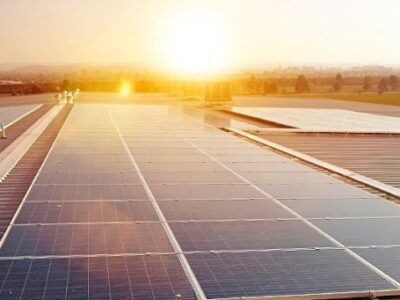Alaska’s Mineral Deposits Hold the Key to Fueling America’s Clean Energy Economy

As the United States moves closer and closer to a fully sustainable economy, many solutions are showing up in our own backyard. Prospective opportunities to develop a more dynamic American economy are abound in the state of Alaska, which has extraordinary mineral deposits that may sustainably fuel domestic clean energy. From a world-class graphite deposit in the northwest part of the state to rare-earth minerals in the southeast panhandle, Alaska has the potential to offer a secure, sustainable supply of such metals – metals that are needed to power electric vehicles, batteries, and a host of other renewable energy projects. Alaska is living up to its name as the Last Frontier: its giant, untapped landmass has vast potential for materials such as cobalt and nickel, as well as renewable energy ingredients such as rare earth, silver, germanium, and tellurium. Of particular importance is the large supply of copper and zinc which will be needed in vast quantities for the economic transition.
For many years, the U.S. has acquired these minerals from abroad, most often from the Democratic Republic of Congo, a country mired in political unrest and supply chains with humanitarian problems. This is a perfect time to switch the source location to the States, with the additional benefit of fewer carbon emissions for transport. With the new federal administration backing sustainable legislation that encourages using American mining for the production of clean energy, Alaska has the opportunity to step to the forefront of a growing microeconomy, both environmentally and economically. President Biden raised the stakes by recently signing an executive order instructing federal agencies to investigate what is needed to ensure a strong and reliable supply of the materials needed for a lower-carbon energy future. Alaska’s mineral wealth is at the top of the list.
This is a once-a-century opportunity for Alaska to leverage that vast wealth. In fact, the International Finance Corporation estimates that this shift to low-carbon energy and electric mobility will create nearly $23 million in market opportunities over the next 10 years. The 49th state’s rich mineral supply is both sustainable and secure.
“There are moments in history when everything changes. Inflection points. We believe such a point is upon us for the mass adoption of electric vehicles,” said General Motors Global Chief Marketing Officer Deborah Wahl. “Unlike ever before, we have the solutions, capability, technology, and scale to put everyone in an electric vehicle.”
While on the surface, electric vehicles (EVs) are made of the same steel and polymers used to build traditional cars, the heart of the batteries that power EVs requires lithium, cobalt, graphite, and nickel deep under Alaska’s surface. The state is home to world-class-sized deposits of many of these, most of which are in the exploratory phase. Lithium is perhaps the most versatile, needed for storing energy at solar and wind facilities, and for cutting the electrical cord on most everyday electronic devices.
One of the largest Alaska projects on the horizon is from Graphite One, Inc. The company is exploring a new project on the Seward Peninsula that would make it the dominant American producer of high-grade graphite used in EV manufacturing, fire suppression, and synthetic diamond production. Additionally, Ucore Rare Metals’ Bokan Mountain heavy rare-earth project near Ketchikan is working to outpace the Chinese mineral market to supply critical materials for lithium-ion batteries.
“We are very Alaska-centric,” Ucore President Ty Dinwoodie said. “I believe that Alaska can and will play a significant role in building a domestic critical-materials supply chain. Alaska is quite unique in terms of its appreciation for and understanding of the importance of mining, processing, and refining.”
Alaska Senator Lisa Murkowski is at the forefront of the push to bring even more sustainable mining to the state, with recent legislative acts including the American Mineral Security Act.
“Our foreign mineral dependence leaves us at the mercy of other nations for resources we could produce right here in Alaska,” she explained.
The state’s potential for sustainable mining is untapped, with numerous companies and existing mine sites exploring what may be beneath the surface. Alaska’s mineral wealth may well indeed be the key to powering America’s sustainable future.
“Originally published in the March 26, 2021 edition of North of 60 Mining News (www.miningnewsnorth.com).”





